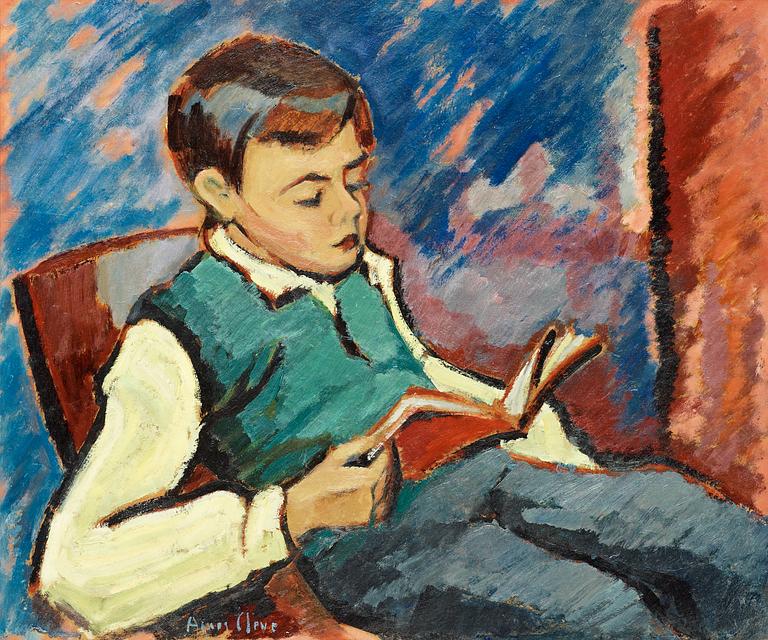Agnes Cleve
Reading boy
Signed Agnes Cleve. Panel 52 x 62 cm.
More information
Agnes Cleve har avbildat sin son Per-Erik då han sitter försjunken i en bok. Per-Erik som var född 1915 avbildades ofta av sin mor, med stark innerlighet och kärlek. Agnes Cleve lyckas i denna rofyllda bild förmedla en varm stämning.
Designer
Agnes Cleve was born in Uppsala in 1876. After completing her secondary education, she studied art at the School of Arts and Crafts in Stockholm. When she started a family she moved to Gothenburg and studied art at Valand where Carl Wilhelmsson was her teacher. After a difficult divorce, Angnes moved to Paris in 1913, where she studied for Le Fauconnier together with John Jon-And. They eventually got married, and later moved to Stockholm and settling in Gothenburg. The couple often stayed at their summer cottage by the Gullmar Fjord, a place called Källviken, which became a gathering point for several artists, including the couple Gabriele Münter and Wassily Kandinsky. Kandinsky was, in his homecountry Germany, the leader of the group “Der Blaue Reiter”, a group which advocated for cubism and German modernism. It is without a doubt that they influences Agnes Cleve and Jon-And. Cleve has done several artists trips to paint Sandhamn, Skagen, London, Italy, Holland, Belgium, North Africa, Spain, Turkey, and the USA (where he even lived for a period). In Cleve’s collection, one can find figure paintings, window views, portraits, cityscapes, and west coast genres. Agnes Cleve's art was exhibited across Europe (Paris, Amsterdam, Copenhagen, among others). There was a lot of talk surrounding her exhibition together with none other than Sigrid Hjertén in Paris in 1937, and she was classified by a German critic as Sweden’s most influential artist during the first half of the 20th century. She is currently represented by the National Museum, Gothenburg’s Art Museum, Gävle Museum, Norrköping’s Museum to name a few.
Read more





























